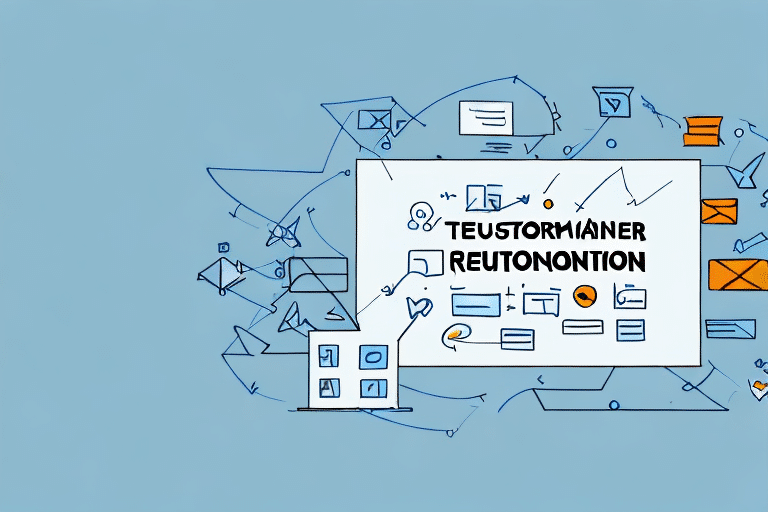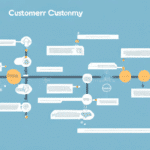Importance of Customer Retention for Business Success
In today's competitive business landscape, customer retention is paramount for sustainable growth and profitability. Retaining existing customers is often more cost-effective than acquiring new ones, with research indicating that it can be up to five times cheaper. Additionally, the probability of selling to an existing customer ranges between 60-70%, compared to just 5-20% for new prospects. High customer retention leads to increased profits, reduced marketing costs, and enhanced brand reputation.
For more insights on the cost benefits of customer retention, refer to this Harvard Business Review article.
Understanding and Meeting Customer Needs
To effectively retain customers, it's essential to comprehend their values, preferences, and expectations from your business. This involves actively listening to their feedback, analyzing their behaviors, and segmenting them based on common trends. By understanding your customers deeply, you can tailor personalized offers, promotions, and communications that resonate with them. Additionally, continuously improving your products or services ensures that you meet their evolving needs and stay ahead of competitors.
Listening to Customer Feedback
Implementing regular surveys, feedback forms, and social media monitoring can provide valuable insights into customer satisfaction and areas for improvement.
Segmentation and Personalization
Segmenting customers based on demographics, purchase history, and behavior allows for targeted marketing strategies that address specific needs and preferences.
Building Strong Relationships with Customers
Establishing robust relationships with customers fosters loyalty and encourages repeat business. This involves exceeding customer expectations, responding promptly to inquiries, and demonstrating genuine care and empathy. Customers who feel valued are more likely to remain loyal and advocate for your brand.
Creating a Sense of Community
Developing platforms where customers can share experiences, provide feedback, and engage with your brand builds a sense of belonging and strengthens relationships.
Consistent Communication
Maintaining regular, meaningful communication through newsletters, updates, and personalized messages keeps customers engaged and informed.
Creating Exceptional Customer Experiences
Delivering exceptional customer experiences is crucial for both retaining existing customers and attracting new ones. An outstanding experience exceeds customer expectations, delights them, and makes them feel special. Key touchpoints include your website, social media channels, customer service, packaging, delivery, and after-sales support.
Mapping the Customer Journey
Understanding the emotional journey of your customers helps identify pain points and opportunities for enhancing their experience.
Exceeding Expectations
Implementing surprise and delight strategies, such as unexpected rewards or personalized thank-you notes, can significantly enhance customer satisfaction.
Leveraging Technology for Customer Retention
Technology plays a vital role in customer retention by enabling automation, data collection, and personalized experiences at scale. Tools like Customer Relationship Management (CRM) software, marketing automation platforms, social media listening tools, and analytics dashboards are essential for effective retention management.
Choosing the Right Tools
Selecting technology that aligns with your business needs and integrates seamlessly with existing systems is crucial for maximizing its benefits.
Utilizing Data Analytics
Analyzing customer data helps in understanding behaviors, predicting trends, and making informed decisions to enhance retention strategies.
Measuring Customer Retention and Loyalty
Tracking and measuring customer retention and loyalty is essential for assessing the effectiveness of your strategies and identifying areas for improvement. Key metrics include Customer Lifetime Value (CLV), Customer Satisfaction Scores (CSAT), Net Promoter Score (NPS), churn rate, and repeat purchase rate.
Key Metrics Explained
- Customer Lifetime Value (CLV): The total revenue a business can expect from a single customer account.
- Net Promoter Score (NPS): Measures the likelihood of customers recommending your business to others.
- Churn Rate: The percentage of customers who stop using your product or service over a given period.
Consistently monitoring these metrics provides valuable insights and helps in benchmarking against industry standards.
For more information on measuring customer loyalty, visit the Nielsen Norman Group.
Best Practices and Common Mistakes in Customer Retention
Implementing effective customer retention strategies involves following best practices while avoiding common pitfalls.
Best Practices
- Prioritize customer retention and allocate sufficient resources.
- Personalize offers, promotions, and communications to align with customer preferences.
- Show genuine empathy and care in all customer interactions.
- Leverage technology to enhance and streamline retention efforts.
- Continuously gather and act on customer feedback.
Common Mistakes to Avoid
- Ignoring customer feedback or treating it as an isolated issue.
- Adopting a one-size-fits-all approach rather than personalizing experiences.
- Being overly aggressive in sales or communication efforts.
- Neglecting the importance of employee training in delivering quality service.
- Failing to adapt to changing customer needs and market trends.
Employee Training and Its Impact on Customer Retention
Investing in employee training and development is crucial for delivering exceptional customer service and enhancing the overall customer experience. Well-trained employees are better equipped to understand customer needs, communicate effectively, and resolve issues promptly.
Types of Training
- Onboarding programs to familiarize new employees with company values and customer service standards.
- Ongoing coaching and skill development to keep employees updated on best practices.
- Role-playing and scenario-based training to prepare employees for various customer interactions.
Benefits of Effective Training
- Improved customer satisfaction and loyalty.
- Increased employee motivation and engagement.
- Reduced employee turnover and associated costs.
Case Studies: Successful Customer Retention Strategies
Examining successful companies provides valuable insights into effective customer retention strategies.
Amazon
Amazon excels in delivering exceptional customer experiences through personalized recommendations and convenient services like one-click purchasing and fast, free shipping. Their focus on customer convenience has significantly contributed to high retention and repeat purchase rates.
Zappos
Zappos is renowned for its outstanding customer service, offering free shipping and returns, a 365-day return policy, and 24/7 customer support. Their company culture emphasizes employee empowerment, enabling representatives to provide personalized and empathetic service.
Nike
Nike leverages technology and gamification through its NikePlus program, which offers personalized coaching, rewards, and challenges. This engagement strategy fosters a strong community and encourages continuous interaction with the brand.
The Future of Customer Retention Management
Customer retention strategies are evolving with advancements in technology and changing customer expectations. Future trends include:
- Artificial Intelligence and Machine Learning: Enhancing personalization and predicting customer behaviors.
- Emphasis on Data Privacy: Ensuring transparent and ethical use of customer data.
- Emotional Intelligence in Customer Service: Balancing automation with human empathy.
- Integration of AR and VR: Creating immersive customer experiences.
- Focus on Sustainability: Aligning retention strategies with social and environmental responsibility.
Staying abreast of these trends will help businesses adapt and maintain a competitive edge in customer retention.
Explore more on future trends in customer retention from the Forbes Technology Council.
Conclusion
Effective customer retention management is essential for achieving long-term business success. It requires a comprehensive approach that includes understanding customer needs, building strong relationships, delivering exceptional experiences, leveraging technology, and continuously measuring and refining strategies. By adhering to best practices, avoiding common mistakes, investing in employee training, and staying informed about future trends, businesses can enhance customer loyalty, reduce costs, and drive sustainable growth.




















